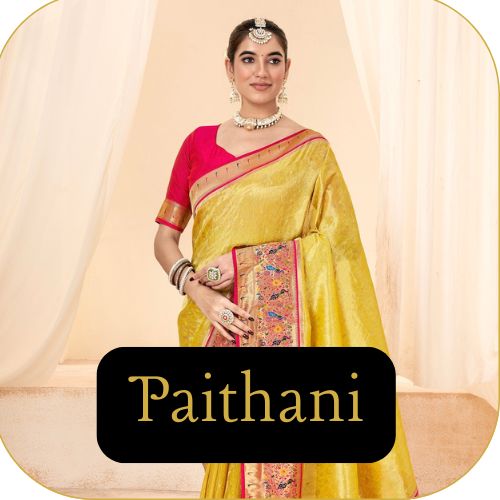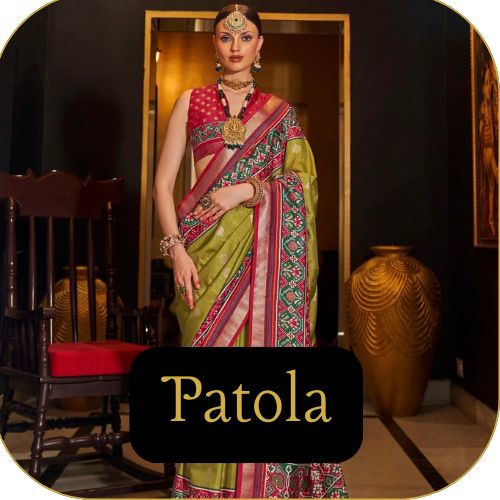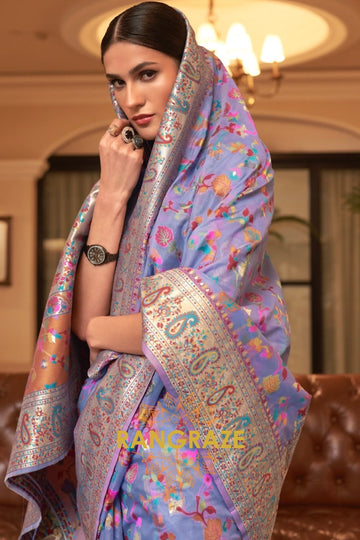If you’ve ever fallen for a picture of a stunning Kashmiri Pashmina saree online, only to receive something that feels like a rough wool blend — you’re not alone.
The market is flooded with “Pashmina-like” fabrics, and figuring out what’s real and what’s not has become trickier than ever. But there are still a few simple ways to protect your money — and your wardrobe — from getting duped.
What Makes Kashmiri Pashmina So Special?
Real Kashmiri Pashmina sarees are woven from the fine hair of the Changthangi goat, found high in the cold regions of Ladakh. These fibers are hand-spun and hand-woven by skilled Kashmiri artisans who’ve kept this craft alive for centuries.
It’s not just fabric — it’s art. A genuine Pashmina Kashmiri silk saree feels like air on the skin yet carries a warmth that synthetic materials can’t mimic. Each weave tells a story — patient, detailed, and personal. That’s why a true Pashmina piece can take weeks or even months to complete.
Why So Many Fakes?
Blame the digital boom and mass production. Online sellers often mix viscose, polyester, or regular wool and market them as “Pashmina” — because the word sells.
The difference isn’t obvious in photos, especially when filters, lighting, and catchy titles play their tricks.
So, if you’re planning Kashmir silk sarees online shopping, it helps to know what clues separate the real from the replica.
1. The Price Tells a Story
If a saree labeled “Kashmiri Pashmina” is selling for ₹3,000 or ₹5,000, pause right there.
Hand-woven Pashmina isn’t cheap — it simply can’t be. The raw material itself costs much more before even touching the loom. A real piece starts around ₹15,000 and can go upwards depending on the embroidery and craftsmanship.
That said, don’t confuse expensive with authentic. Some sellers hike prices without offering genuine work. Always check for the next signs before believing the tag.
2. Feel the Fabric (If You Can)
You can’t touch fabric through a screen, but if you ever get the chance — maybe through a local boutique, exhibition, or trial — trust your fingers.
Real Pashmina feels soft but not slippery. It’s feather-light, with a natural warmth that grows as you hold it. Machine-made versions often feel stiff, overly smooth, or synthetic.
If you rub the edges gently, authentic fibers might shed a few strands — that’s normal. Fake blends rarely do.
3. Check the Weave and Fringes
Zoom in on the product photos. Handmade Kashmiri printed silk sarees often have tiny irregularities in their weave — that’s a good sign. Machines produce perfect symmetry; human hands do not.
Also, notice the tassels or fringes. In hand-woven sarees, they’re usually twisted by hand and might not look identical. A machine finish will look too neat and uniform.
4. Read the Product Details — Carefully

Many fake sellers hide behind vague descriptions like “Pashmina-style” or “Inspired by Kashmiri weave.”
A legitimate brand won’t hesitate to mention details such as:
-
Source of yarn (Changthangi or Ladakhi)
-
Hand-woven or hand-spun process
-
GI tag certification (Geographical Indication mark)
-
Origin (Srinagar, Kashmir, or Ladakh)
If none of this is mentioned, that’s a red flag. When doing Kashmir silk sarees online shopping, transparency in the product description says a lot about the seller’s authenticity.
5. The Embroidery and Design Language
Authentic Pashmina sarees often carry hand-embroidered motifs inspired by Kashmiri culture — paisleys, florals, and intricate vines. The work is delicate, not glued or machine-stitched.
Run a mental test: if the embroidery looks too glossy or too perfect, it’s likely machine-done.
Also, real Kashmiri artisans use muted, elegant shades with naturally dyed threads. Overly bright neon colors usually signal synthetic fabric.
6. Reviews and Reputation Matter
Before clicking “Buy Now,” check the brand’s story. Read the reviews — not just the stars, but the words. Look for mentions like “soft feel,” “handwoven texture,” or “light and warm.” These are hints that buyers actually received what they were promised.
A trustworthy seller will often share behind-the-loom stories or pictures of artisans. If the brand hides behind stock photos and generic product blurbs, proceed with caution.
7. Test at Home (If You Already Own One)
Here’s a simple trick: take one strand from your saree’s corner (if possible) and burn it safely.
If it smells like burnt hair and turns to ash, it’s real wool.
If it smells like plastic or forms a hard bead, it’s synthetic.
Not the most elegant test, but it’s a classic among textile collectors.
Why Authenticity Is Worth the Effort

A real Pashmina saree isn’t just a luxury buy — it’s a connection to centuries of craftsmanship. When you choose authenticity, you’re helping preserve the livelihood of Kashmiri artisans who still hand-spin every thread.
You’re not just buying fabric; you’re investing in heritage.
Final Word: Buy from Trusted Platforms
If you’re new to Kashmir silk sarees online shopping, start with trusted and transparent brands. Stores like Rangraze carefully curate collections that celebrate authenticity — not shortcuts.
Each saree in our collection is sourced responsibly and hand-checked for quality, purity, and the soul that defines real craftsmanship.
So the next time a deal looks “too good to be true,” remember — real Pashmina doesn’t shout; it whispers elegance.
















